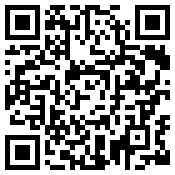
I teach medical students in the IMU Clinical School at Batu Pahat. These students are in their final semester of the MBBS program. They undergo their senior clerkship training here before appearing for their final examination. The senior clerkship program is designed to train these students make the transition from medical student to doctor.
3 GUIDING PRINCIPLES
My job here is largely to show them how to blend their scientific knowledge with the art needed to practice the discipline of internal medicine. Three principles guide me in this role.
- The first is not to be a trader. Traders, as you know, sell in retail what they have bought wholesale. If I catch myself merely dishing out information from books and journals, I know I have violated this principle.
- The second is to always remember that what the student does for learning is more important than what the teacher does for teaching. This comes in handy whenever I plan my classes.
- The third is to be aware that the learning process is akin to the lighting of a candle and not to the filling of an empty vessel.
THE ART OF DIAGNOSIS
The art of diagnosis in Internal Medicine is in many ways similar to that of putting together the pieces of a jigsaw puzzle. I show students the mental processes involved in fitting together the clues they get from the history, physical examination and investigations of their patients. To put it another way, if the knowledge these students already have from their books can be compared to alphabets, my job is to teach them how to form words and meaningful sentences.
I try to impress on my students that understanding involves more than simply hearing the spoken words of their patients. I emphasize the importance of listening with both ears and eyes, for body language is important too. As Wilfred Trotter, an English neurosurgeon once said – “diseases often reveal their secrets in casual parenthesis”. What patients say, and how they say it, can both provide clues to the diagnosis.
The hospital environment is filled with disease, death and suffering. It is not uncommon for health care workers to be adversely affected emotionally because of it. I make my students aware of this and I encourage them to find ways to develop that protective space within them which Dr. Stephen R. Covey has called ‘the space between stimulus and response’ in one of his books. For it is in that space that we can choose our responses to what we see and find around us.
When I teach these young medical students, I am often reminded of these words from a poem by Khalil Gibran: Your children are not your children for they are the sons and daughters of Life's longing for itself. They come through you but not from you. And though they are with you yet they belong not to you…… You may strive to be like them, but seek not to make them like you. For life goes not backward nor tarries with yesterday……
As a coach, I am therefore always aware that the students under my care have the potential to reach heights that I cannot. That, paradoxically, makes me both humble and proud.
Velayudhan Menon, MD
I try to impress on my students that understanding involves more than simply hearing the spoken words of their patients. I emphasize the importance of listening with both ears and eyes, for body language is important too. As Wilfred Trotter, an English neurosurgeon once said – “diseases often reveal their secrets in casual parenthesis”. What patients say, and how they say it, can both provide clues to the diagnosis.
The hospital environment is filled with disease, death and suffering. It is not uncommon for health care workers to be adversely affected emotionally because of it. I make my students aware of this and I encourage them to find ways to develop that protective space within them which Dr. Stephen R. Covey has called ‘the space between stimulus and response’ in one of his books. For it is in that space that we can choose our responses to what we see and find around us.
When I teach these young medical students, I am often reminded of these words from a poem by Khalil Gibran: Your children are not your children for they are the sons and daughters of Life's longing for itself. They come through you but not from you. And though they are with you yet they belong not to you…… You may strive to be like them, but seek not to make them like you. For life goes not backward nor tarries with yesterday……
As a coach, I am therefore always aware that the students under my care have the potential to reach heights that I cannot. That, paradoxically, makes me both humble and proud.
Velayudhan Menon, MD
Related Post












2 comments:
Dr Menon,
Thank you very much for this insightful & thought provoking contribution. Would you like to expand on "don't be a trader"?
David Chong
The term trader is used as an allegory for the packaging and dispensing of knowledge in small bits like a retail merchant would do.
Post a Comment